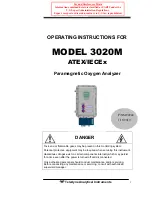
744T User Guide and Technical Information
22
v. 2.67
Features and specifications are subject to change. Visit www.sounddevices.com for the latest documentation.
Digital AES3id Output 2
Output Bus 2 appears solely on the AES3id BNC output connector. There is no analog output con-
nections for Output Bus 2. The unbalanced AES3id output is directly compatible with most S/PDIF
inputs. The maximum output level is 0 dBFS and can be attenuated in the setup menu in 1 dB incre-
ments by 40 dB.
Headphone Output
The 744T headphone output is a flexible tool for monitoring audio in the field. The 744T allows the
user to monitor inputs, tracks, and post-record tracks in a number of combinations. MS stereo and
B-format surround decoding are also available in headphones.
The headphone output is independent of the Master Output Bus and the Output Bus 2—audio
sources can be routed to headphones independent of routing assignments to output buses.
The 744T is capable of driving headphones to extremely high sound pressure levels. Hearing experts
advise against exposure to high sound pressure levels for extended periods.
Selecting Headphone Sources
The headphone source display on the main LCD screen (
) shows the audio sources sent to
headphones. The 744T comes from the factory with several preset headphone audio source selections
available on the Rotary Switch. These selections include inputs, tracks and track monitors. Turn the
Rotary Switch to select among the available headphone monitoring sources.
Track Monitoring While Recording (Confidence Monitoring)
The 744T can monitor actual recorded audio written to the internal hard drive or CompactFlash dur-
ing recording. This is commonly referred to as “confidence monitoring”. To monitor recorded tracks,
during recording select one of the track monitor modes. Because of the record buffering topology of
the 744T, a delay of up to 12 seconds can be expected before recorded audio appears at the output.
The 744T will play back recorded audio from the media highlighted on the LCD panel (see
File Man-
agement and Copying
for more information on selecting and highlighting storage medium).
Setting Headphone Source Options
In addition to the 10 preset headphone routings, a total of 20 available “slots” can be filled in a user
defined order. Headphone monitoring sources can be set from various combinations of inputs,
tracks, and post-record tracks, including stereo MS decoding, and SoundField B-Format surround
decoding. The order of headphone selections is user selectable. Available audio sources for head-
phone monitoring include:
HP Sources
Description
Inputs
1,2
Inputs
3,4
Stereo monitoring of input pairs. Inputs 1 and 3 are assigned to left headphone output;
inputs 2 and 4 are assigned to right headphone output.
Tracks
A,B
Tracks
C,D
Stereo monitoring of track pairs. Tracks 1 and 3 are assigned to left headphone output;
tracks 2 and 4 are assigned to right headphone output. Upon playback, will play as track
monitor.
Monitor
A,B
Monitor
C,D
Stereo monitoring of playback (post-record) track pairs. Tracks 1 and 3 are assigned to left
headphone output; tracks 2 and 4 are assigned to right headphone output.
When using the recorded track monitor selection, there is a sample rate dependent delay in the signal. At 48
kHz sampling, the delay is approximately 12 seconds. This delay is due to the record buffering topology. Audio
can not be monitored until it has left the record buffer and written to the recording media.
Summary of Contents for 744T
Page 2: ...backside front cover ...
Page 6: ......
















































